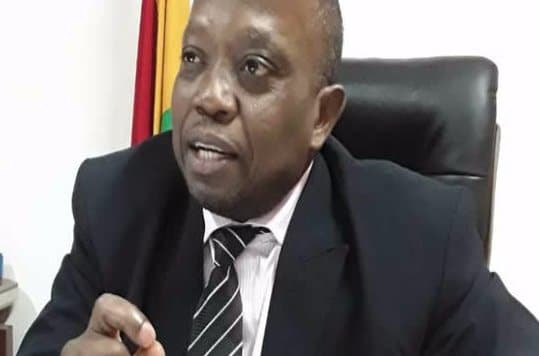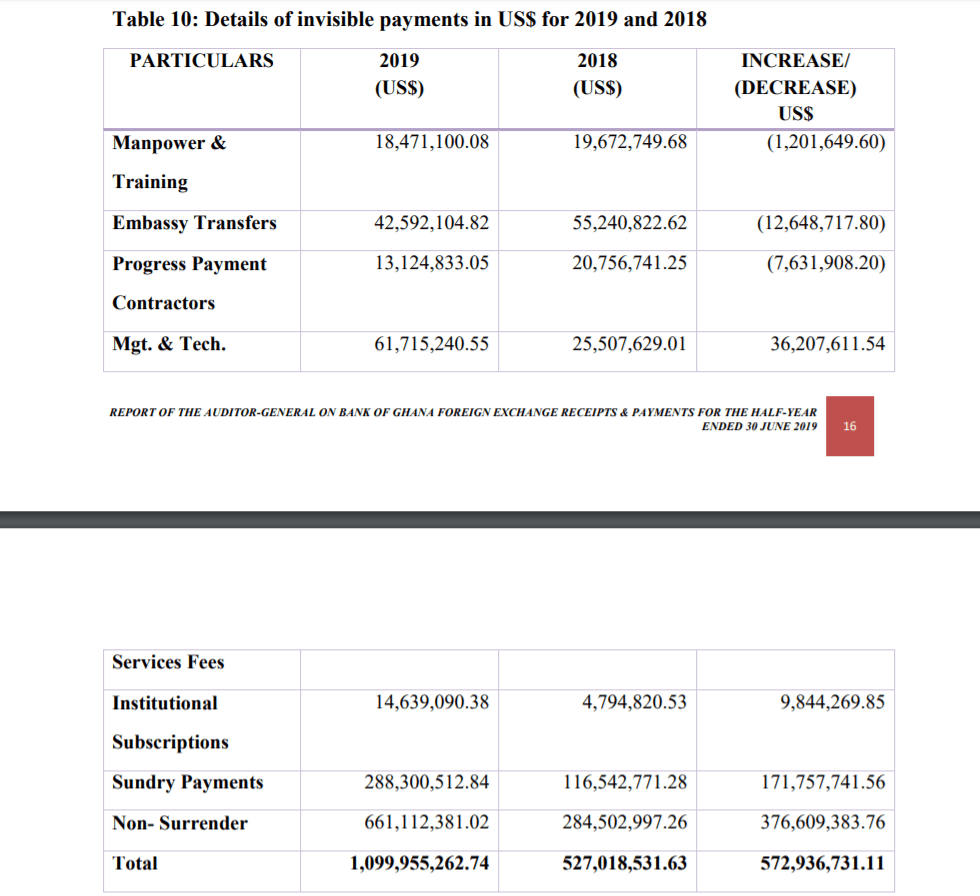Published
6 years agoon

This was contained in the Auditor-General’s report on the Bank of Ghana’s foreign exchange receipts and payments for the half-year ended June 30, 2019.
The amount, which was captured under “Invisible payments”, was spent on manpower, training and development.
The Auditor General’s report explained that the invisible payments were made up of manpower, training and development, embassy transfers, progress payments to contractors, management and technical services fees, capital subscriptions and sundry payments.
The report, however, noted that the amount spent was 6.11 per cent lesser than what was spent during the same period in 2018.
“Total transfers for the period of 2019 were US$18,471,100.08 compared with US$19,672,749.68 for the corresponding period of 2018, recording a decrease of US$1,201,649.60 or 6.11%. The decrease was mainly due to a reduction in payment for government-sponsored students abroad and public officers attending courses abroad,” the report said.
According to the report, total invisible payments for 2019 were US$1,099,955,262.74 compared with US$527,018,531.63 for the corresponding period of 2018, registering an increase of US$572,936,731.11 or 108.71%.
“The increase resulted mainly from the rise in all the components of the invisible payments with the exception of progress payment, embassy transfers and manpower training,” it said.
It noted however that BoG’s projection for invisible payments was US$1,392,170,000.00 whereas actual payments were US$1,099,955,262.70 showing a favourable difference of US$ 292,214,737.30 or 20.99%.
A breakdown of invisible payments for the period is provided below.

Source: graphic.com
